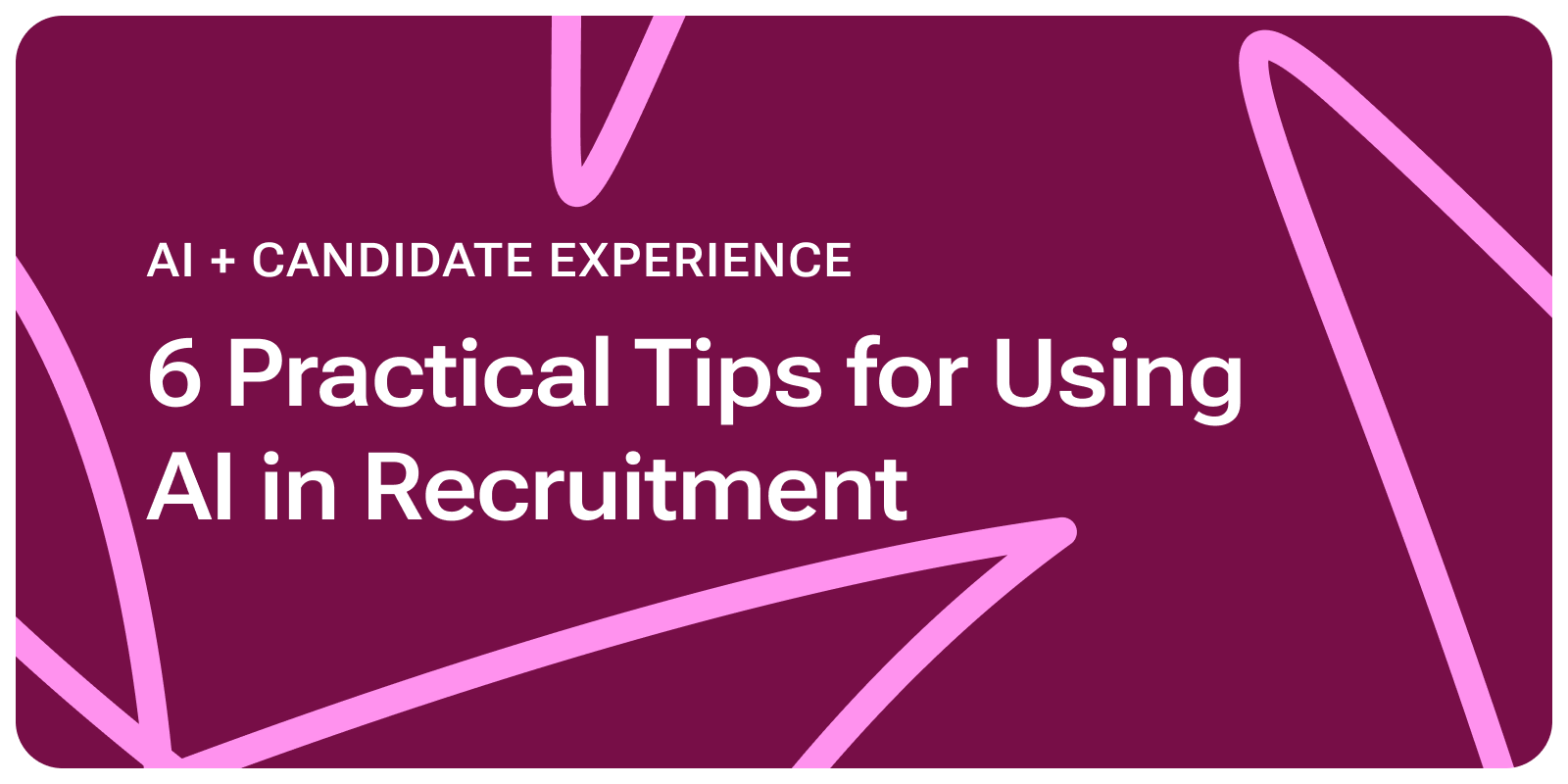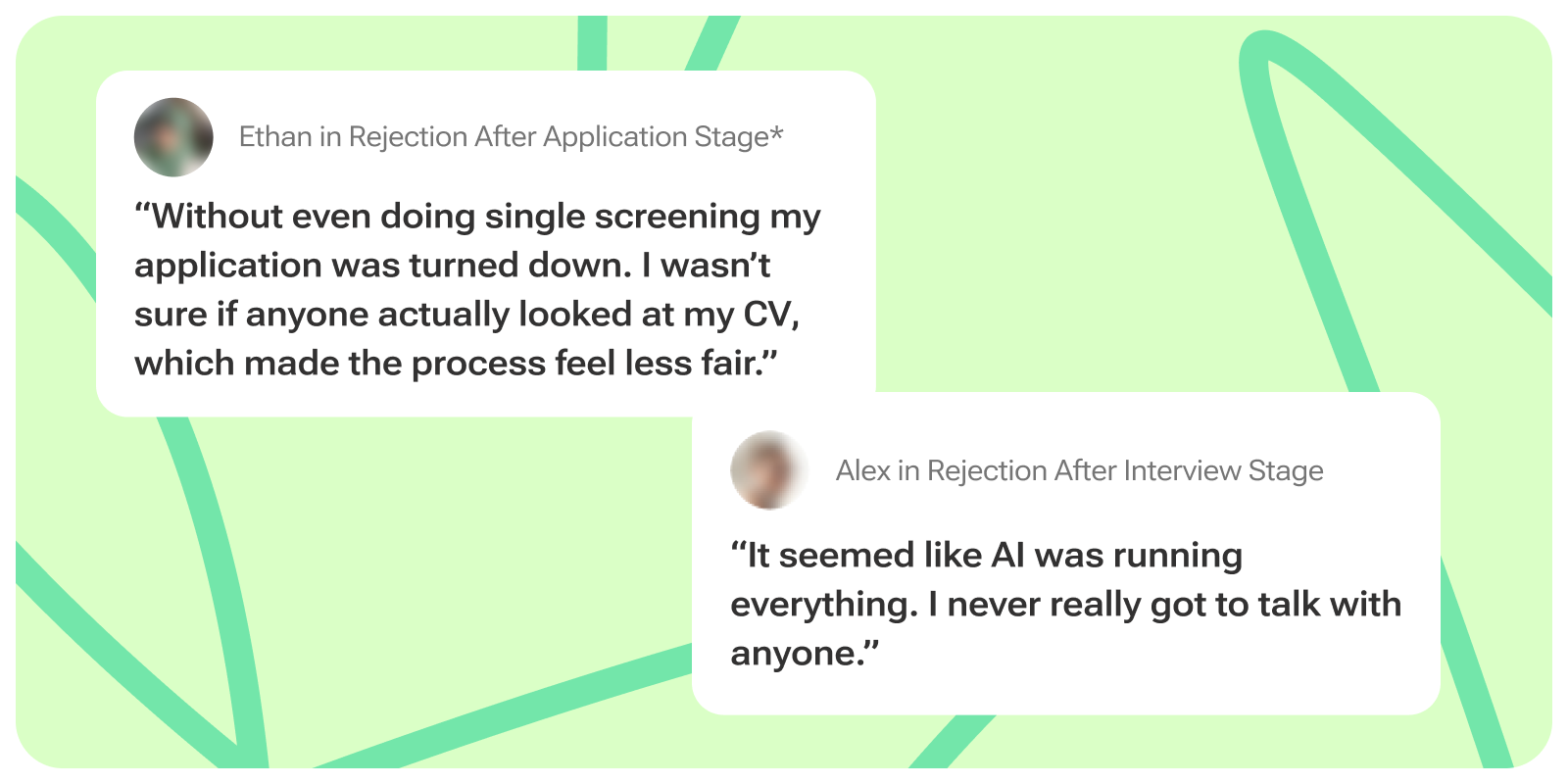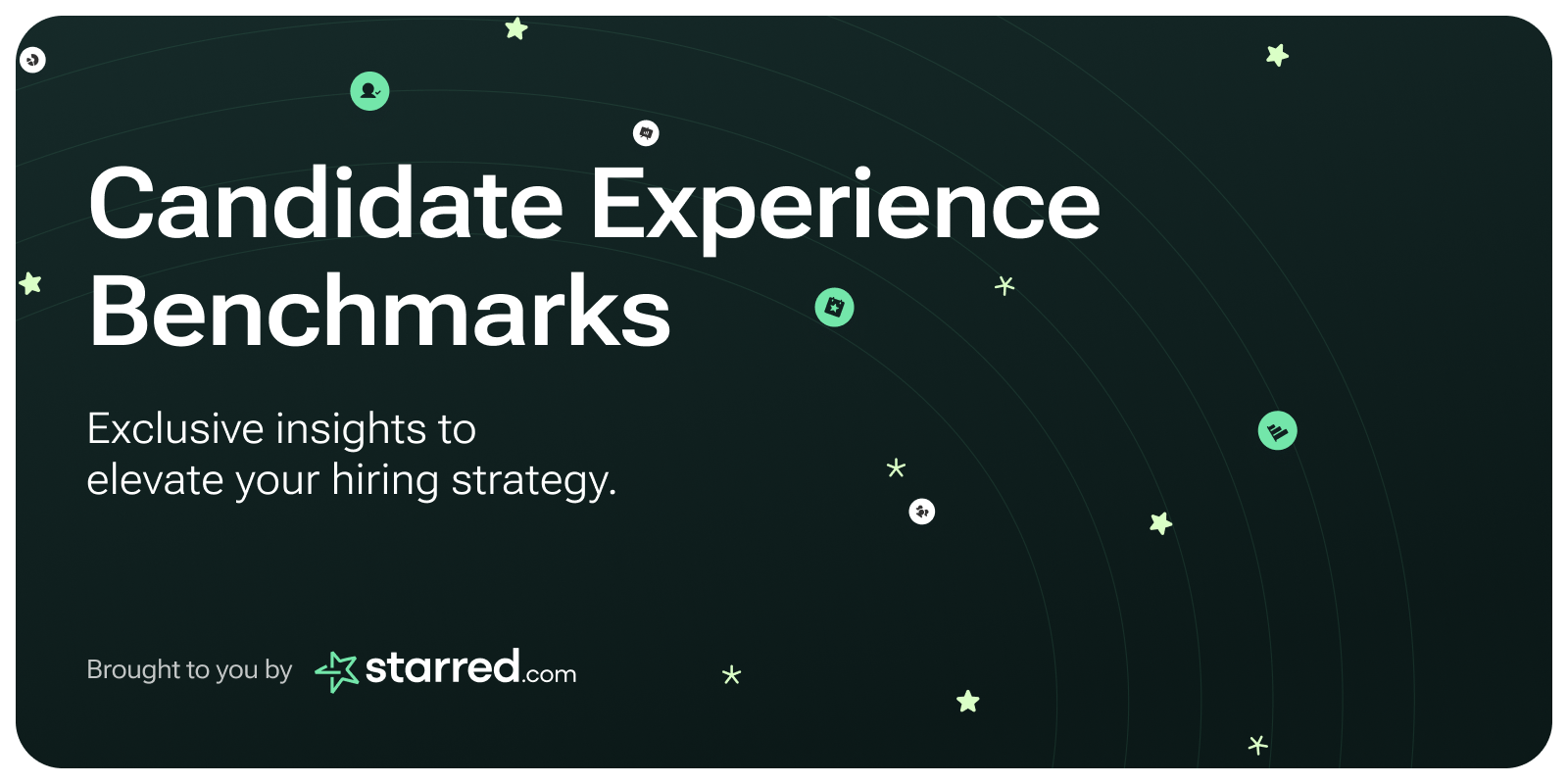Artificial Intelligence (AI) creates speed, consistency, and efficiency in the hiring process. But speed alone doesn’t guarantee a great Candidate Experience. Job seekers consistently say that what matters most is feeling respected, informed, and connected throughout the recruitment journey. In fact, it’s often the small, human touches that shape whether a candidate has a positive experience or they walk away unhappy, ready to tell others about it.
That makes the central challenge clear: if and how can AI help improve Candidate Experience while keeping the human touch at the center of the recruitment process?
The first blog in this series explored the benefits and risks of using AI in recruitment. This article takes the conversation a step further and explains how to actually put AI recruiting tools into practice without losing the empathy and personal touch that candidates value most.
We have collected 6 practical tips and examples from Talent Acquisition leaders on how to bring AI into your recruitment strategy without sacrificing Candidate Experience.
Designing the Hiring Process with a Human Touch
Before we get into the tips, there’s one principle that underpins them all: design your recruitment process with candidates and empathy first.
As our CEO, Daniel Birkholm, stated in a recent panel all about AI and automation:
"Design the hiring process with empathy rather than efficiency. You automate for efficiency and that is most likely something that the candidates actually would like if they get something faster and better, but the process itself, the experience itself, has to be designed with empathy." -Daniel Birkholm, Starred CEO
So rather than asking, “Which tasks can we automate to save time?”, flip the perspective to: “What would an ideal candidate journey look like, and how can AI tools support that vision?”
When recruiters and hiring managers frame automation around improving Candidate Experience, AI becomes a tool for creating faster, clearer, and more engaging processes for candidates, allowing automation to do the heavy lifting in the background.
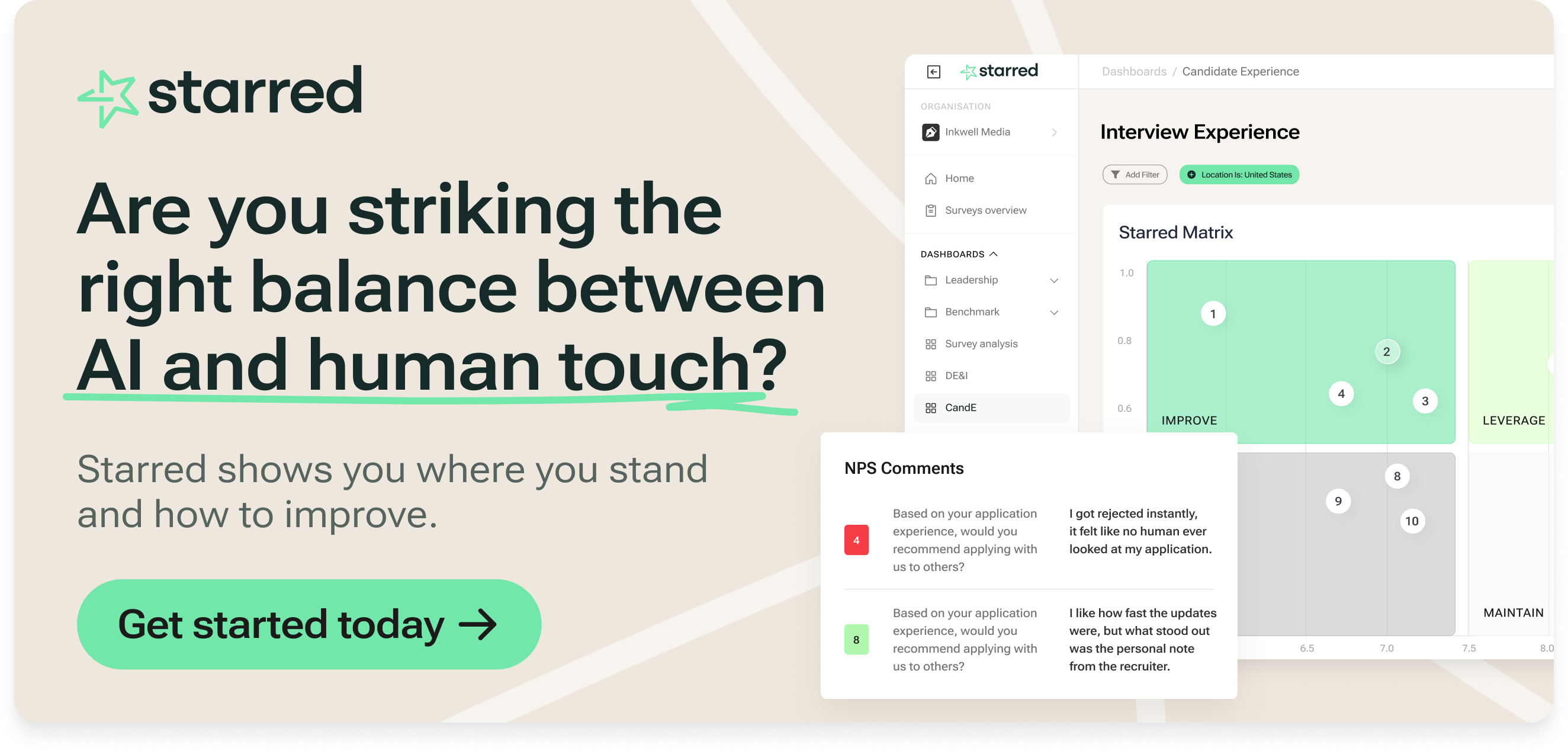
6 Tips for Implementing AI Tools in Recruitment
1. Start Small and Scale What Works
Rolling out company-wide AI initiatives can overwhelm HR teams, create inconsistent candidate experiences, and increase the risk of costly mistakes. A smarter approach is to start small, pick one area to automate (like interview scheduling or reminders) and test it out in a couple of departments before expanding.
For example, as Mark Harman from Wise shared in our panel, they began by automating interview scheduling in a single department. Candidates could instantly select an interview slot from the recruiter’s calendar, eliminating back-and-forth emails. After the testing was a success, Wise rolled this out across the company.
Why it works: This approach delivers quick wins, reduces the risk of losing qualified candidates, and builds confidence across stakeholders.
2. Automate the Back Office First
Not all automation needs to be candidate-facing. In fact, starting with “invisible” tasks can have the biggest impact without disrupting the candidate journey.
Think about focusing on behind-the-scenes tasks first – things candidates won’t notice directly but will feel the benefit of. For example, automated reporting, data analysis or internal coordination can free up resources to focus on interacting with candidates and providing personalized experiences.
Why it works: Talent Acquisition teams get back hours for human conversations, while candidates still feel like they’re dealing with people, not machines.
3. Be Transparent About AI Use
With 90% of job seekers saying they value transparency in hiring, being dishonest (or not explicit enough) about the use of AI systems in your recruitment can damage your employer brand and discourage top talent from completing the application process or re-engaging with your company in the future.
For example, an instant automated rejection without further explanation often signals to candidates that no human even looked at their application, and candidates will leave the process feeling like they’ve just been “rejected by a robot.”
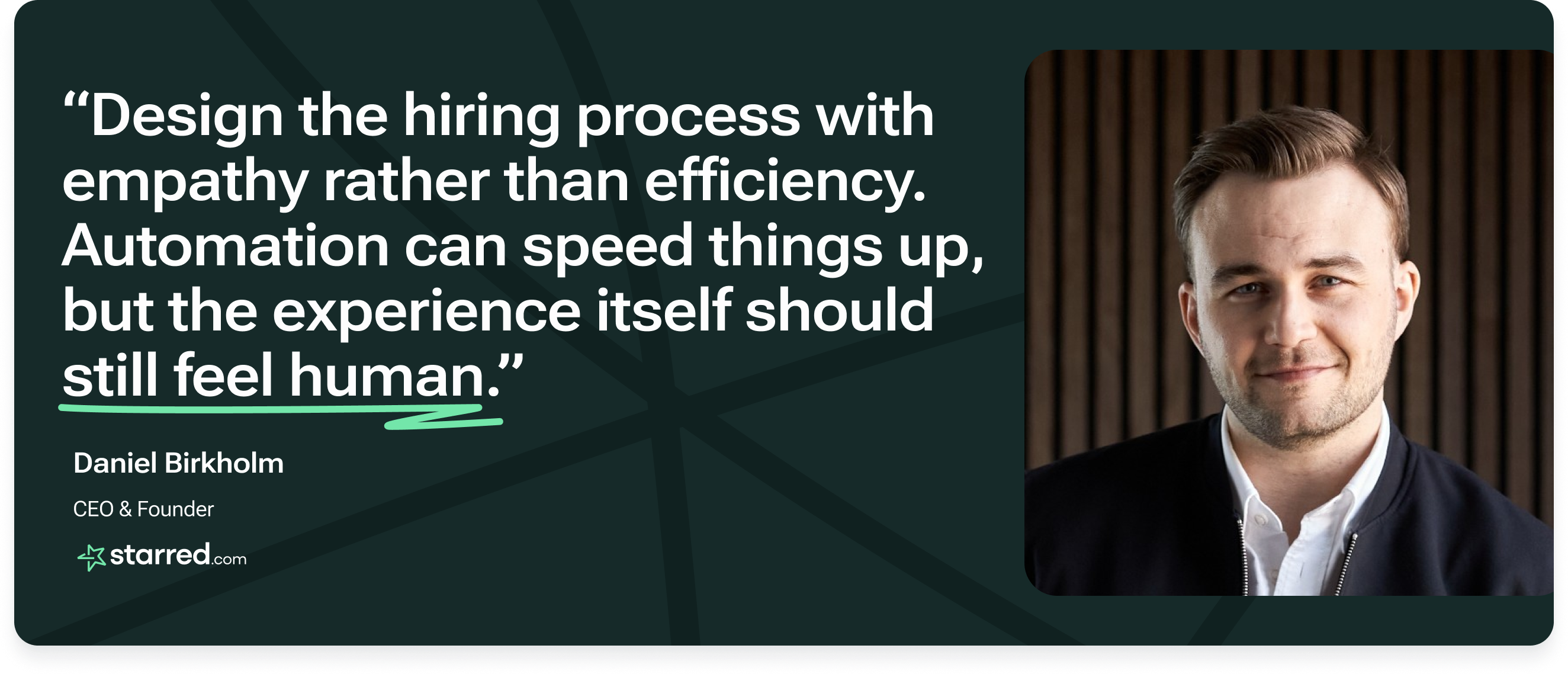
Sending a simple confirmation email or status update explaining the use of technology can make a huge difference. Instead of a generic “your interview has been scheduled,” you might explain: “We use AI scheduling tools so you can instantly choose a time that works best for you.” This frames AI as a way to create fairness, speed, and convenience, not as a replacement for human decision-making.
- Tip: Add short explanations about AI use in application forms, career site messaging or follow-up emails to show how it benefits the candidate journey.
4. Personalize Feedback
Rejections are often the lowest-rated point in the Candidate Experience, with an average candidate NPS of -6, but it doesn't have to be the reason your Candidate Experience suffers. As Mark Harman shared in our panel, at Wise, even candidates who didn't get the job rate their experience highly because they receive detailed and constructive feedback. So instead of leaving with disappointment, candidates gain valuable insights into their skills and areas for improvement for their next job application.
This level of personalization might sound impossible to scale, but AI-powered tools make it achievable. By automating the delivery of candidate rejections, Talent Acquisition teams can provide meaningful, personalized responses. For example, using data from assessments can highlight key strengths, point out areas for improvement or even include tailored resources to help candidates in their future career goals. Even small initiatives, like creating templates for communication by role type or stage in the hiring funnel, add a level of personalization to the process.
Why this works: Personalized feedback shows empathy, strengthens the employer brand, and turns a potentially negative moment into one where candidates feel respected, resulting in higher cNPS scores and leaving the door open for future applications.
5. Create “Moments That Matter”
Candidates may not remember every email or status update, but they do remember how the process made them feel. That’s why the most impactful parts of the candidate journey can often be the smallest touches. Creating "moments that matter" will help candidates feel valued during the hiring process.
It can include:
- Automated reminders for recruiters to check in with candidates personally.
- Adding a friendly message in a virtual waiting room.
- A simple “good luck” note or a seasonal greeting before an interview.
AI and automation play a role here too, by creating the time and space for recruiters to deliver them. By automating repetitive tasks like scheduling or reminders, recruiting teams can spend those extra minutes building genuine connections. For example, Starred's firefight notifications can warn the right person on your team when a candidate has a bad experience, so they can immediately reach out to offer support.
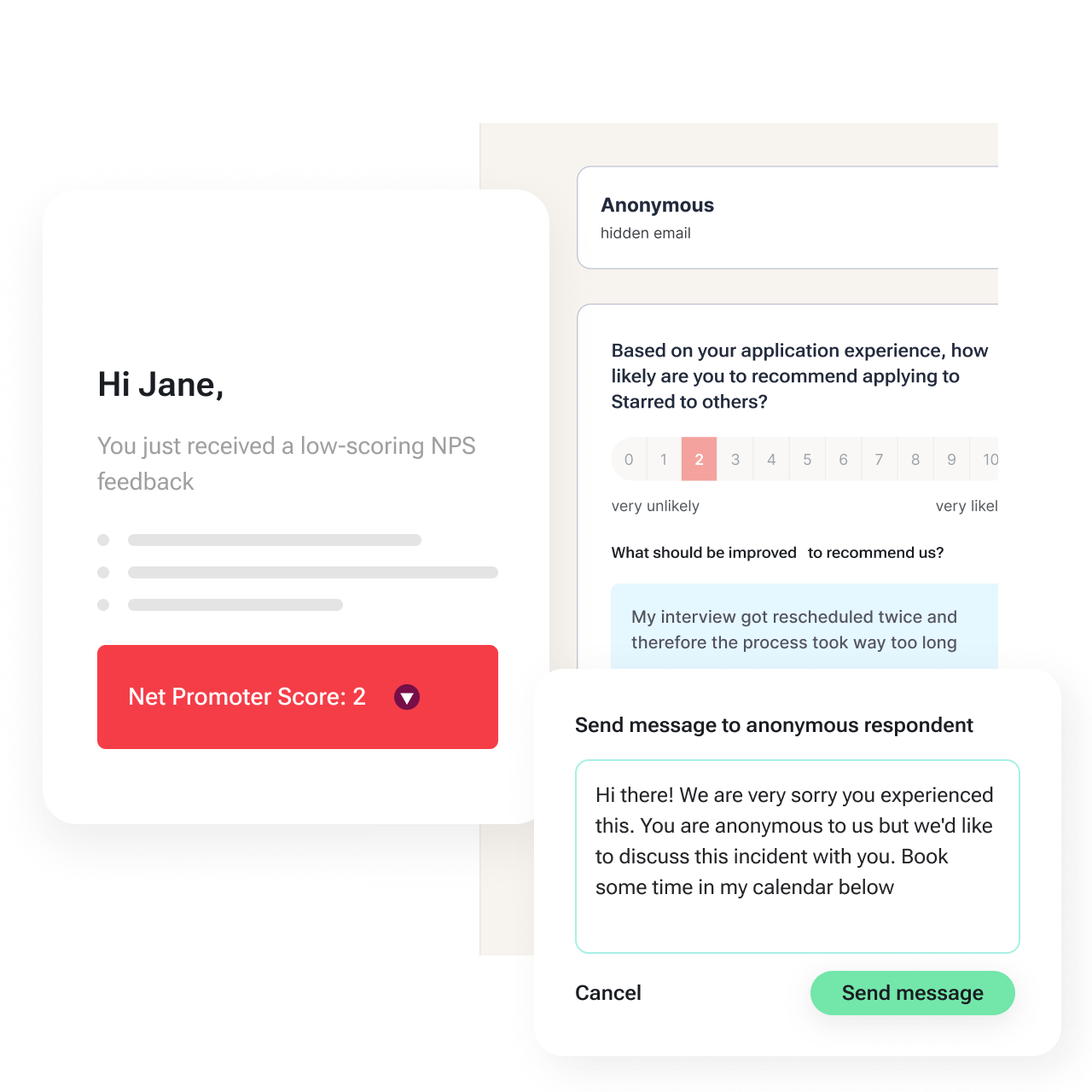
Why this works: A small human touch at the right time creates an emotional connection that AI can’t replicate, leaving candidates with a positive, lasting impression of your recruitment strategy.
6. Measure and Adapt With Feedback
What's the best way to know if you’ve struck the right balance between efficiency and empathy? Ask the people experiencing it: your candidates.
The key is to gather candidate feedback consistently and at different moments, for example, after multiple rejection touchpoints: after application, interviews and assessments. Doing so gives you a clear picture of the experience from multiple points in the recruitment journey. This feedback helps identify friction points, uncover bias, and highlight whether candidates feel valued or like they’re another number in the system. Learn more about gathering candidate feedback in our guide!
And this is another example of where automating this process, with a platform like Starred, will allow you to capture data-driven insights at scale without adding extra admin for recruiting teams. Over time, candidate data will highlight patterns, pinpoint stages that need improvement, and confirm whether your balance between AI and human connection is working well.
Why it works: Candidate feedback is a reality check. It helps identify friction points, highlight bias, and confirm whether AI technology is creating a more engaging experience or unintentionally damaging it.
Curious about how your AI efforts are shaping Candidate Experience? Get in touch with us to see how candidate feedback can help you strike the right balance.
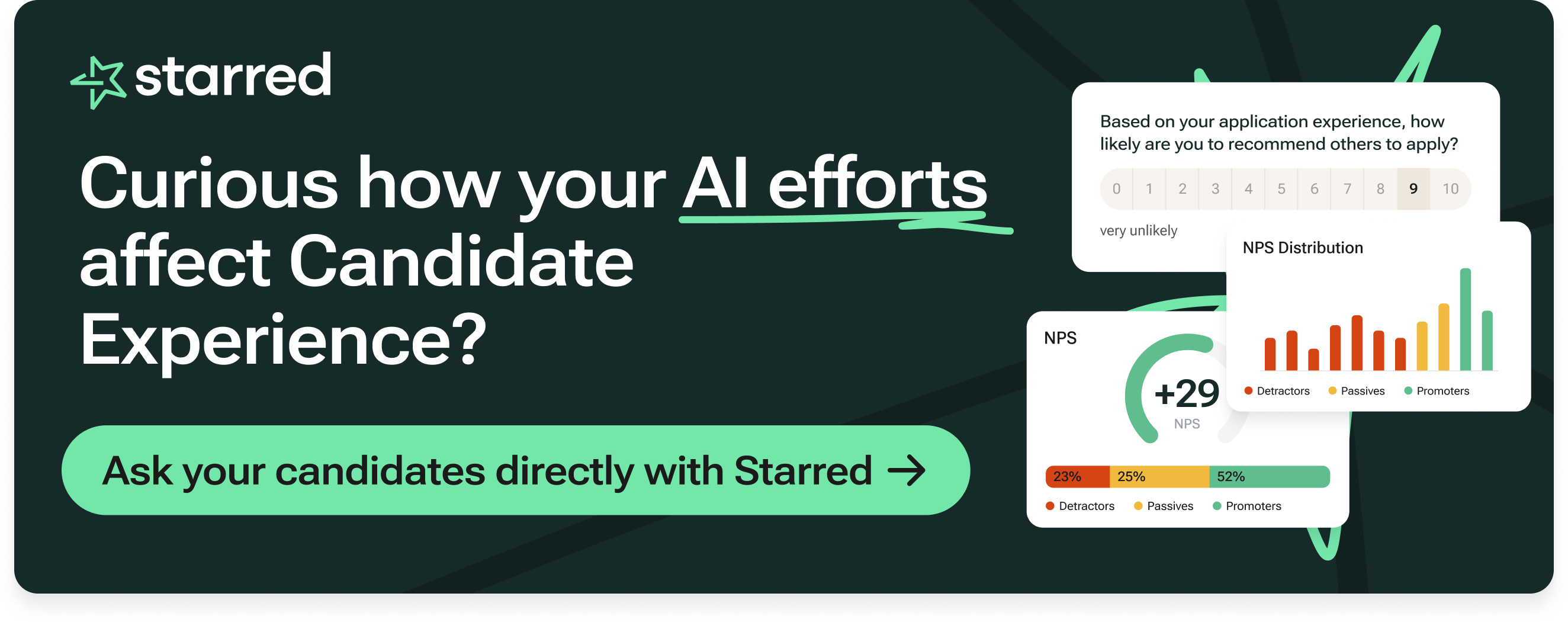
Checklist: 6 Tips for AI-Driven Candidate Experience
- Start small and scale what works: Test AI in one area of the hiring process (like interview scheduling or feed) before rolling it out more broadly to reduce risks and build confidence.
- Automate the back office first: Focus on invisible, admin-heavy tasks like reporting or coordination to free up recruiter time without disrupting candidate interactions.
- Be transparent about AI use: Let candidates know how and why you use AI so they see it as a tool for creating a better experience, not a “robot making decisions.”
- Personalize candidate feedback: Use AI-powered tools to turn candidate data into tailored feedback, so even rejected candidates leave with useful insights and a sense of respect.
- Create moments that matter: Free up time with automation and reinvest it into small, thoughtful gestures that show care and human connection.
- Measure and adapt with feedback: Gather candidate feedback at key touchpoints to see how AI initiatives are impacting candidates and use the data to refine your recruitment strategy.
Conclusion
The future of hiring isn’t AI vs humans. It’s AI giving TA teams the time and tools to do what they do best: connect with people.
When used thoughtfully, AI and automated systems can handle administrative tasks, reduce friction, and help predict candidate success. But the real competitive advantage comes when recruiters combine intelligent automation with empathy, creating a seamless experience where every candidate feels respected, informed, and valued.
Learn more about using AI to create a competitive edge in our blog: "Candidate Experience AI: Benefits, Risks, and Best Practices".

